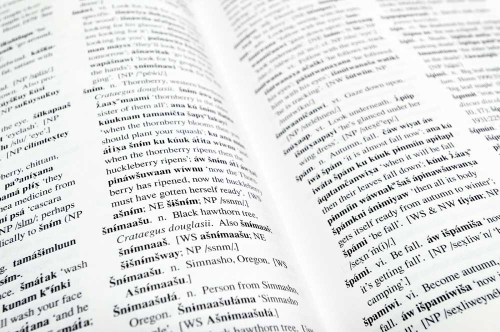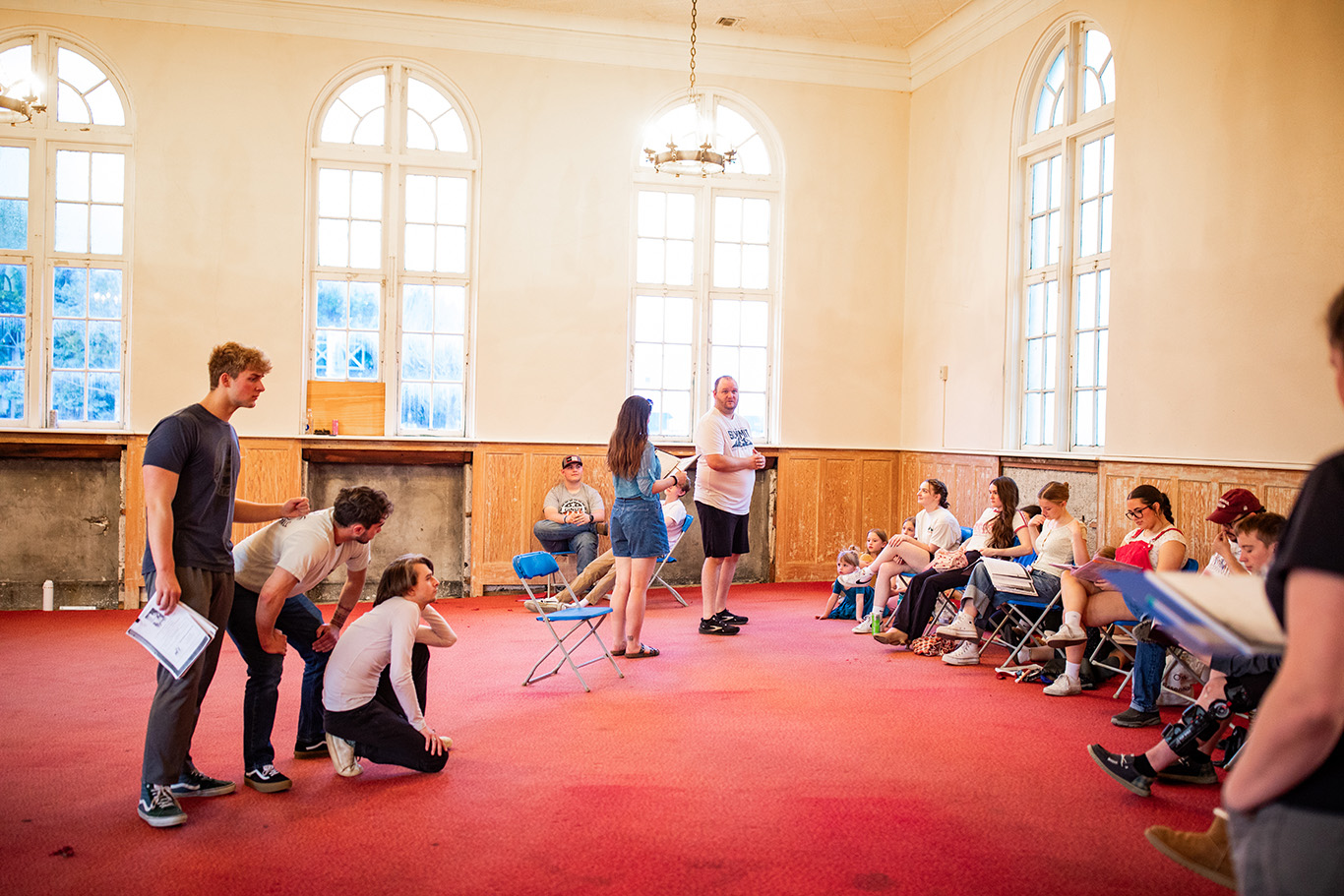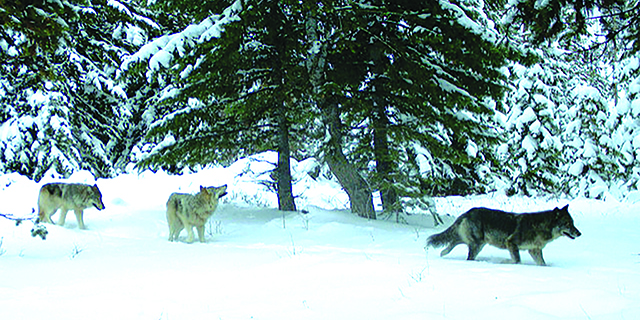Words captured in Umatilla Dictionary
Published 3:21 pm Friday, December 26, 2014

- The Umatilla Dictionary provides a tool for the tribe as it documents and preserves the Umatilla language.
The newly published Umatilla Dictionary begins with the words, “Cawna mun naamta.” In English, that means “We shall never fade.”
The phrase couldn’t be more appropriate. The book contains 622 pages of words, definitions and grammar in a language that was in danger of disappearing from memory.
“Our elders were passing,” said Thomas Morning Owl, a fluent Umatilla speaker. “With the proceeds from the casino, the tribe decided to document and preserve the language.”
The Confederated Tribes of the Umatilla Indian Reservation hired Noel Rude, a linguist intensely interested in studying Sahaptin languages.
In 1996, CTUIR education director Marguerite Allman contacted Rude in Mexico, where he was teaching linguistics.
Thomas Morning Owl, the program’s first coordinator, spent plenty of time with Rude. Morning Owl described him as “one of the most diligent, hardworking, humble people you would ever meet. He was so passionate about language that he infused the rest of us with the same kind of energy.”
Earlier, Rude had traveled around the Umatilla, Warm Springs, Yakima, Nez Perce and Klamath reservations interviewing elders and other fluent speakers of Umatilla, Walla Walla and Nez Perce dialects, sleeping in his old Impala.
“My purpose in those days was not a dictionary, but rather the grammar,” said Rude, in an email. “I was a linguist and a linguist is most interested in grammar.”
Rude, who retired as soon as the dictionary was finished, now lives at the Oregon Coast. He researched not only the Umatilla dialect of the Sahaptin language, but also Walla Walla and Nez Perce.
Current CTUIR linguist Modesta Minthorn said her mother and father, both native Nez Perce speakers, gave Rude a fond nickname.
“Ever since we were kids we’ve known him as ‘Xeeleyc.’ My dad defined that as ‘persistent,’ while my mom’s definition was ‘bothersome,” said Minthorn, smiling. “She said, ‘He was always waiting for me with his little pad and pencil.’ It was definitely an endearment.”
Morning Owl and Minthorn, who earned her master’s in linguistics at the University of Oregon, said Rude didn’t start from scratch with his research. Others had come before.
The body of work included that of Bruce Rigsby, an Australian university professor, and Melville Jacobs, who researched in the 1920s. Other contributing linguists included Virginia Hymes, Henry Millstein and Eugene Hunn.
Morning Owl and his cousin Fred Hill grew up immersed in the Umatilla language.
“Our grandmother wouldn’t tell us to wake up. She’d say, ‘Taxshik,’” Morning Owl said. “We had daily immersion.”
Hill said he was urged to translate stories his Uncle Charlie told about family happenings from Umatilla to English and vice-versa.
“That’s how I got my allowance,” Hill said.
Rude zeroed in on fluent speakers such as Morning Owl and Hill and most especially the elders who spoke Umatilla as their native language. Dozens of them are listed on an early page in the dictionary.
“At the time he came here, there were lots of native speakers who had full command of the language,” Morning Owl said.
Morning Owl’s mother, Inez Spino Reves, now deceased, was “a marvel,” according to Rude.
“Her language was almost entirely unaffected by English — all the old grammar was there,” Rude wrote. “I was able to elicit the kinship terms in all their myriad forms, and many grammatical details of the old language before they were forgotten forever.”
The dictionary evolved over years, living in various three-ring binders along the way.
“He printed his first version of the dictionary in 1996,” Minthorn said. “The next came in 2000 and another in 2006.”
The ace linguist once lost the dictionary in a computer crash, Minthorn said, and quickly learned about backing up on external hard drives. Happily, he had the latest hard copy to re-input.
The unpublished versions of the dictionary were used by Hill and others who teach language classes. In 2010, Minthorn said, Rude declared the dictionary complete enough to publish. Minthorn contacted the University of Washington Press and eventually inked a deal. Funding was also provided by the National Geographic Genographic Legacy Fund, the Endangered Language Fund Native Voices Endowment and the tribes.
Because of retirements at the UW Press, the process took a few years. Finally, without warning, a pallet of 700 books arrived this November. Minthorn was ecstatic. She opened a box of eight, lifted out one of the hefty books and looked over the pages with excitement.
The long-awaited dictionary will provide a tool for the tribe’s language classes. Two years ago, the tribe kicked off an innovative language immersion class for three-year-olds.
“We started with a cadre of 10,” Morning Owl said. “They were thrown into a situation where they had to sink or swim. They became the core. It will grow from there.”
Morning Owl said the Umatilla language continues to evolve as words are created to describe function. A future iteration of the dictionary might contain words such as computer, dragon and stapler.
“New coinages occur in much the same way as in English,” Rude wrote. “How is it we add words like laptop, selfie, quark, etc.? People are creative.”
Morning Owl, a translator for the tribe, attends Board of Trustee meetings to translate Umatilla into English. Sometimes, he said, an elder will lapse into Umatilla, but it happens less frequently.
Rude laments the passing of native speakers, but is philosophic.
“Those elders represented a nation, a language and way of thinking that can never be completely recorded or recaptured on paper,” Rude wrote. “The language will never be restored as it was, but neither should people forget who they are.”
Rude, who now lives near Reedsport, returned recently to the reservation for a book launch, attended by many from the tribe.
“It was really emotional,” Minthorn said.
She said other tribes have shown interest in the dictionary as a template for documenting their own languages. The dictionary is available for purchase at the Tamastslikt Cultural Institute for $50. At the moment, the volume is on sale for $40.
———
Contact Kathy Aney at kaney@eastoregonian.com or call 541-966-0810.





